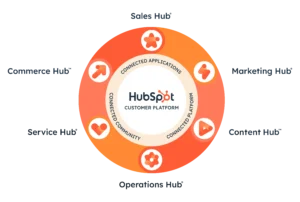In the pharmaceutical industry, where innovation meets high stakes, advanced planning is the cornerstone of success. Developing a breakthrough drug involves navigating complex scientific challenges, regulatory landscapes, and market dynamics. Strategic foresight and meticulous planning enable pharmaceutical companies to accelerate timelines, reduce costs, and ultimately deliver life-saving treatments to patients. This article explores how advanced planning drives innovation and efficiency in the development of breakthrough drugs.
1. The Role of Advanced Planning in Drug Development
1.1 Streamlining Research and Development (R&D)
The drug discovery and development process is inherently complex, often taking over a decade and billions of dollars to bring a single drug to market. Advanced planning optimizes R&D efforts by:
- Target Identification: Using predictive analytics and AI to identify promising biological targets.
- Preclinical Studies: Designing studies that generate robust data to support clinical trials.
- Resource Allocation: Prioritizing projects based on scientific feasibility and market potential.
1.2 Navigating Regulatory Requirements
Regulatory approval is a critical milestone in drug development. Proactive planning ensures that compliance strategies are integrated early, reducing delays and increasing the likelihood of approval.
Key Strategies:
- Engaging with regulatory agencies early through pre-IND (Investigational New Drug) meetings.
- Developing comprehensive documentation for clinical trial applications.
- Adopting adaptive trial designs to meet evolving regulatory expectations.
1.3 Accelerating Clinical Trials
Clinical trials represent the most time-intensive and costly phase of drug development. Advanced planning mitigates risks and streamlines this process by:
- Patient Recruitment: Leveraging data-driven approaches to identify and enroll eligible participants quickly.
- Site Selection: Identifying high-performing clinical trial sites to maximize efficiency.
- Monitoring: Using real-time data monitoring tools to ensure adherence to protocols and swiftly address issues.
2. Technological Innovations Supporting Advanced Planning
2.1 Artificial Intelligence and Machine Learning
AI and machine learning have revolutionized the planning and execution of drug development by enabling predictive analytics and data-driven decision-making.
Applications:
- Predicting drug efficacy and safety profiles.
- Optimizing trial designs to enhance success rates.
- Identifying potential risks and mitigation strategies early.
2.2 Digital Twins in Drug Development
Digital twin technology creates virtual models of drugs or biological systems, allowing researchers to simulate and optimize processes without physical trials.
Benefits:
- Reduces the need for extensive animal testing.
- Accelerates preclinical development.
- Provides insights into drug interactions and potential side effects.
2.3 Big Data Analytics
Big data enables pharmaceutical companies to analyze vast amounts of information from diverse sources, including patient records, genetic data, and clinical trial results. This comprehensive view supports informed decision-making at every stage.
3. Collaboration and Cross-Functional Teams
Advanced planning in pharmaceuticals thrives on collaboration among diverse teams. Integrating expertise from various disciplines fosters innovation and ensures alignment with organizational goals.
Key Players:
- R&D Teams: Drive scientific innovation.
- Regulatory Affairs: Ensure compliance with local and global standards.
- Supply Chain Management: Plan for large-scale production and distribution.
- Marketing and Sales: Align development with market needs and customer expectations.
4. Case Studies: Success Stories in Advanced Planning
4.1 COVID-19 Vaccines
The rapid development of COVID-19 vaccines exemplifies the power of advanced planning. Collaborative efforts among governments, pharmaceutical companies, and regulatory agencies accelerated timelines without compromising safety or efficacy.
Key Takeaways:
- Early investment in mRNA technology provided a foundation for success.
- Simultaneous manufacturing during clinical trials reduced delays.
- Data-sharing and global partnerships streamlined regulatory approvals.
4.2 Orphan Drugs
Developing treatments for rare diseases (orphan drugs) often involves unique challenges due to small patient populations. Advanced planning enables:
- Efficient patient recruitment through targeted outreach.
- Tailored trial designs to meet specific regulatory requirements.
- Strategic partnerships with advocacy groups to enhance visibility and funding.
5. Challenges in Advanced Planning
Despite its benefits, advanced planning in drug development faces several hurdles:
5.1 Uncertainty in R&D
Scientific discoveries are unpredictable, requiring flexibility and contingency plans to address setbacks.
5.2 Regulatory Complexity
Navigating diverse and evolving regulatory frameworks across regions demands meticulous coordination and expertise.
5.3 High Costs and Resource Constraints
Advanced planning requires significant investment in technology, talent, and infrastructure.
6. Conclusion
Advanced planning is a critical enabler of breakthrough drug development. By leveraging cutting-edge technologies, fostering collaboration, and addressing challenges proactively, pharmaceutical companies can drive innovation and deliver life-saving treatments efficiently. As the industry continues to evolve, the role of strategic foresight in transforming ideas into impactful therapies will only grow in importance.

